We are very fortunate at AP to be able to view thousands of fantastic images each year. It’s not easy to choose a favourite but here are a few that stuck with us during 2024, along with images chosen by picture editors and some of our contributors…
The AP Team’s Choice: Best photographs of 2024
Nigel Atherton, Editor
Ramadan Celebrations in Gaza by Belal Khaled
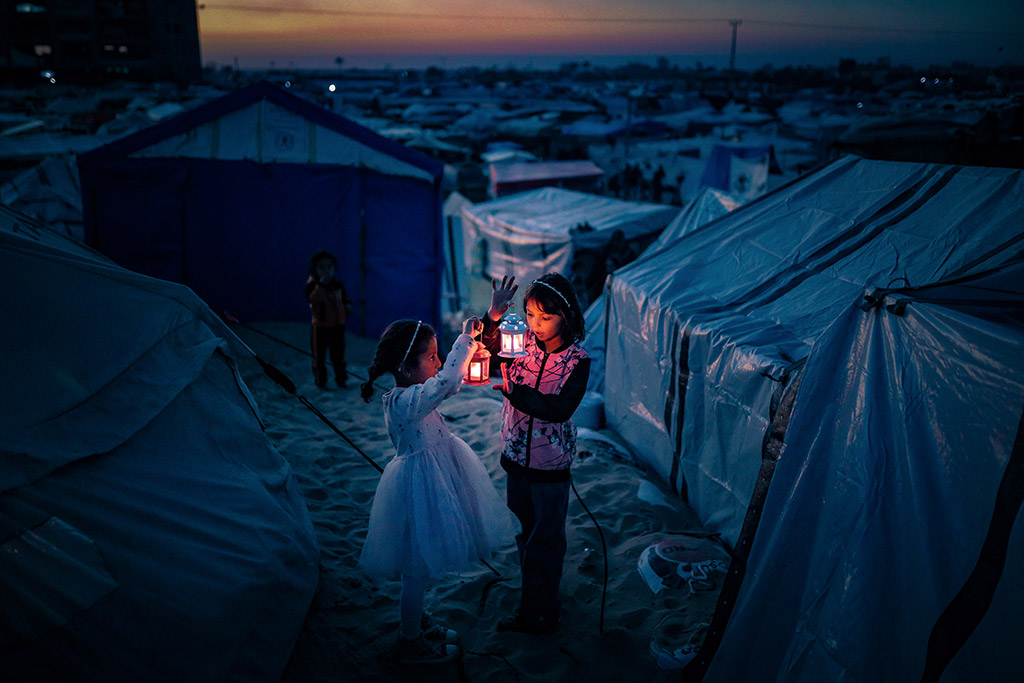
2024’s biggest ongoing documentary photography story must surely be Israel’s daily onslaught against the Palestinian population following the 7 October 2023 attacks. Anyone who pays attention has probably already seen far too many images of death, destruction and suffering. This visually beautiful image by Belal Khaled, taken in Rafah, Gaza, conveys a rare moment of joy and hope as two children light lanterns for Ramadan, surrounded by the city of tents in which they are now forced to live. They are among the lucky ones – more than 11,000 other children, just like these, have had their lives extinguished in Gaza during the last year.
Gabriel Medina at the Paris Olympics by Jerome Brouillet
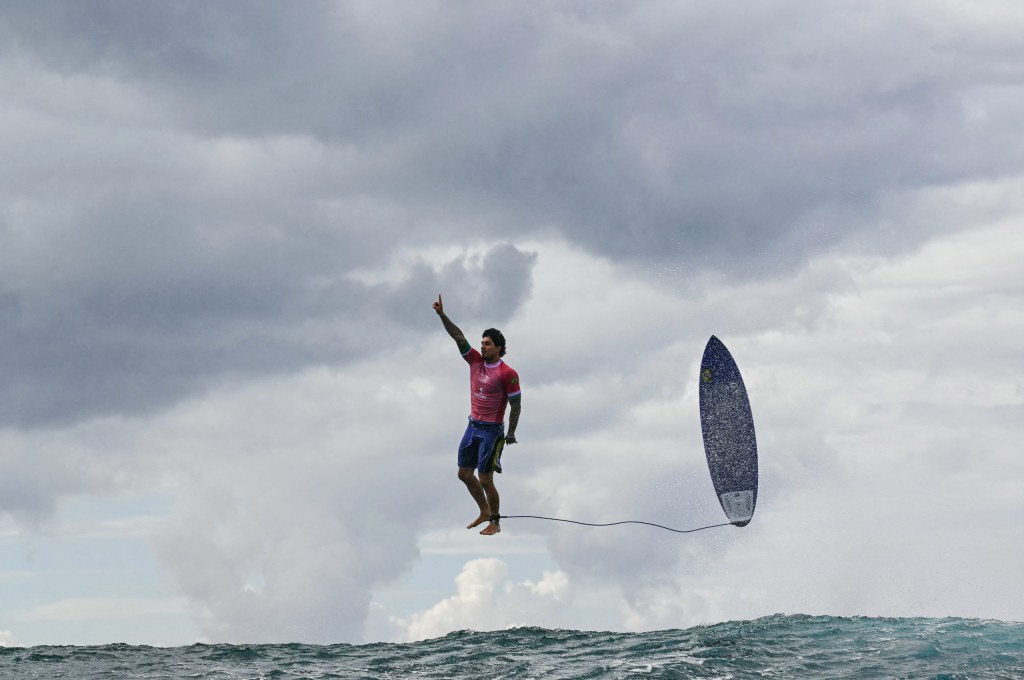
The Paris Olympics provided some of the greatest sporting images of the year but the best photo of all was taken not in Paris but, unexpectedly, Tahiti, where Jerome Brouillet captured Brazilian surfer Gabriel Medina gaining a near-perfect 9.9 score and appearing to levitate in the process. Many claimed it was photoshopped – not helped by the shape of the cloud behind him – but millions watched it happen live on TV and it was captured from multiple angles. This is not only the best sports image of 2024, it will go down as one of the most iconic sporting pictures of all time.
Rebeca Andrade, Simone Biles and Jordan Chiles on the podium at the Paris Olympics by Gabriel Bouys

The surfer may be the best photograph taken at the Olympics but this is my personal favourite. We followed the women’s gymnastics and watched it all. We were both moved by Rebeca Andrade’s story of growing up in poverty in a Brazilian favela, and how she had to walk miles to her gym lessons as a child, accompanied by her brothers, because they couldn’t afford the bus fare.
We desperately wanted her to win a gold medal but she had the misfortune to be competing with the great Simone Biles (who we cheered on as well, and who also has her own triumph-over-adversity story). When Andrade finally got her gold medal, this wonderful spontaneous gesture of respect and sisterhood from Biles and Chiles brought a tear to my eye. The act transcended the world of sport to become one of the year’s biggest cultural moments. Unfortunately the historic significance of this, the first all-black female podium, was short-lived when Chiles was stripped of her bronze medal but this moment will live on forever.
Angel of the North by Liam Man

The idea of using drones not to capture subjects from the air but to light them is pretty new to me. Liam Man has become an expert at the technique – so much so that we featured him in our 3 September issue. It’s one thing to blast a subject with bland flat lighting but he has learned to sculpt the illumination from his flying lights just as a master portrait photographer would do in a studio. I particularly love this one, not just for the contrast of colours but the touch of humour he added in giving the angel a halo.
Andy Westlake, Technical Editor
Misty Morning by Andrew Robertson
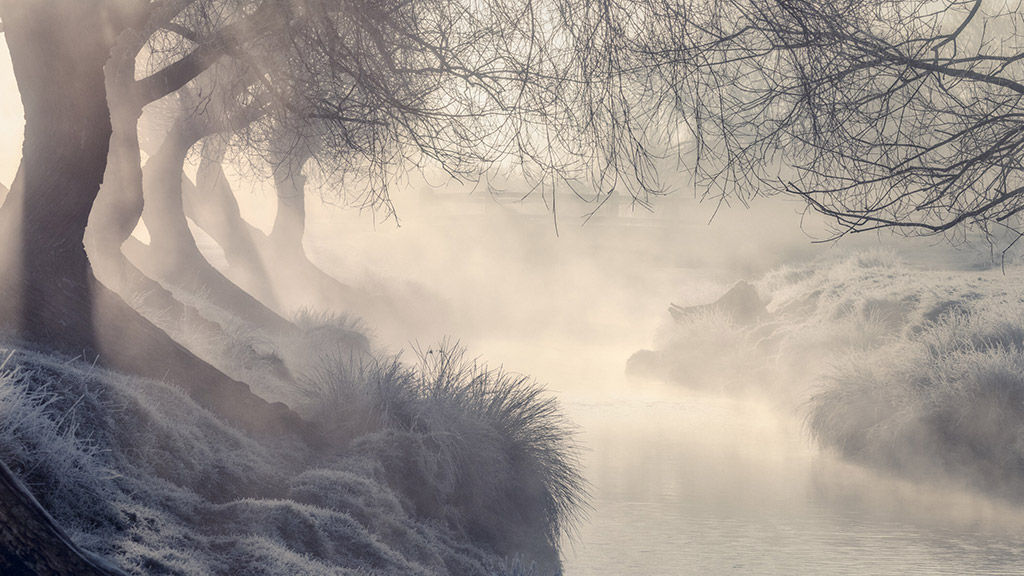
This image particularly caught my eye this year. It comes from the Landscape round of our Amateur Photographer of the Year competition, in which it placed fifth for photographer Andrew Robertson. It’s an incredibly evocative shot of mist rising from a river on a sunny, frosty morning. I love how everything comes together perfectly, from lens choice and framing, to processing and cropping. The telephoto compression emphasises the repetitive sinuous forms of the trees on the left, while the subtle colouration communicates the feeling of the golden light of morning and the coldness of the frosty grass. It’s a lovely shot, perfectly executed.
Amy Davies, Features Editor
How Many More Knots? by Sujata Setia

Each year I continue to be amazed by the standard of photography entered into the Sony World Photography Awards. This year was no different, with some absolutely stunning shots across all of the categories. However, I’m always drawn to the ‘Creative’ category, as you can rely on it to give you something different, unexpected and usually one that makes you stop and think.
Sujata Setia’s brilliant and moving series, A Thousand Cuts, is an ongoing series of portraits looking at patterns of domestic abuse within the South
Asian community. She makes the prints on thin paper, and then makes
continual cuts to represent the ancient Asian form of torture known as ‘lingchi’ (death by a thousand cuts). The final artwork is photographed in a tight crop, giving us a sense of suffocation.
The result is impactful, poignant but also beautiful. They certainly stopped me in my tracks when I saw them. I’d urge readers to take a look at sujatasetia.com for more of her important images, and don’t forget to see worldphoto.org for more from the SWPA too.
Isabella Ruffatti, Online Writer
Layers of the Games by Hector Vivas
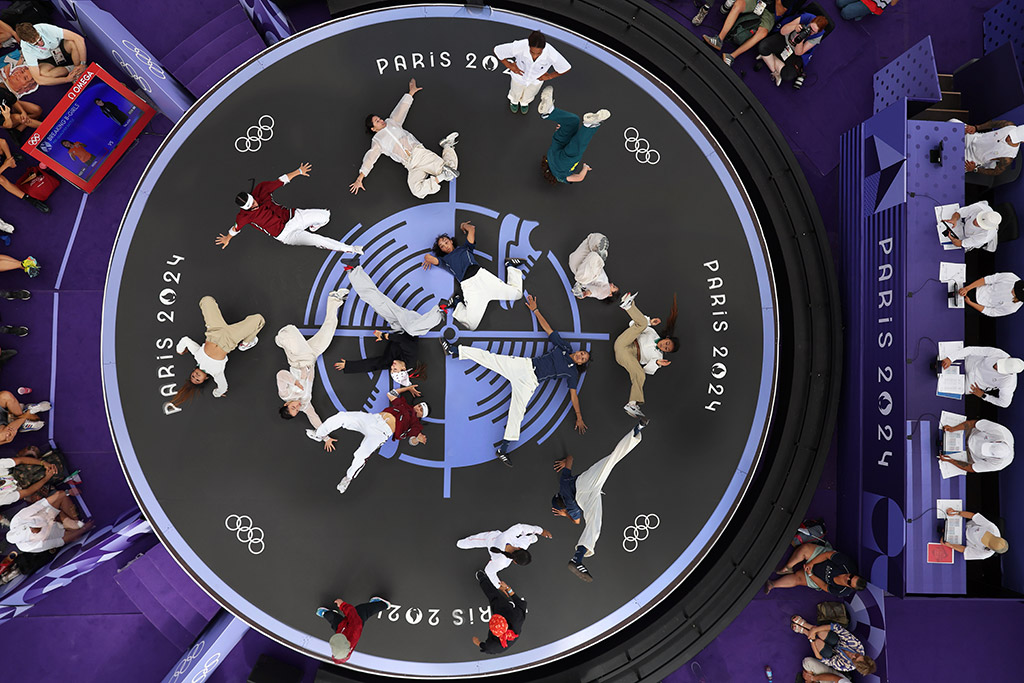
This year the Olympic Games and later the Paralympics took place in Paris. Many amazing pictures came out of these events, but a few in particular stood out to me.
These included Naomi Baker’s photo of a rhythmic gymnast with a ball, Gabriel Bouys’s gymnastics podium photo and Carmen Mandato’s series of portraits documenting the return of the fans to these Olympics. I found myself returning to and poring over the rest of Hector Vivas’s Olympics digital composite images most of all, which show multiple moments that happened during a game or a day of competition in one photo.
This photo was noteworthy to me as these Games were the first time Breakdancing was in the Olympics.
While the composition is relatively simple, with the stage right in the middle of the frame, the bird’s eye view is fascinating because you can see spectators, photographers, and judges framing the circular stage on which the athletes (yes, including Raygun) perform.
Photojournalism can often be, and is encouraged to be, as straightforward as possible but there is room for creatively crafted photographs like this one that are informative as well as aesthetically pleasing.
Jessica Miller, Deputy Online Editor
Ice Bed by Nima Sarikhani

Announced earlier in the year, the winner of the 59th Wildlife Photographer of the Year’s People’s Choice award was British amateur photographer Nima Sarikhani with ‘Ice Bed’.
Nima was on an expedition in the northern region off Norway’s Svalbard archipelago. Having spent three days desperately searching for polar bears through thick fog, the expedition vessel changed its course. It turned and headed to the southeast.
Just before midnight, a young male clambered onto a small iceberg and clawed away at it to carve out a bed for himself before drifting off to sleep.
I wrote about ‘Ice Bed’ for a Photo Insight feature back in the AP 9 April issue. I was immediately drawn into the narrative and composition of this photo, and I can see why it was a very popular image when I shared it across our social platforms. Whilst the pastel colours are beautiful and the sleepy state of the polar bear conveys a sense of calm and peace, this image is a stark reminder of the challenges that these animals face in terms of habitat loss and survival.
The 60th Wildlife Photographer of the Year competition is now on display at the Natural History Museum until 29 June 2025. Voting for the 60th People’s Choice award closes on 29 January 2025, with results revealed in February. Visit www.nhm.ac.uk/wpy/peoples-choice
Hollie Latham Hucker, Technique Editor
Light of a New Day by Thanayu Jongwattanasilkul

It’s the human element in this stunning landscape scene that caught my eye. This is clearly a breathtaking location for any landscape photographer to explore but what gives the image visual impact is the placement of the person walking across the vast, empty beach towards Vestrahorn mountain in Iceland.
Using a DJI Air 2S, the photographer has been able to elevate their viewpoint and capture the focal point centrally on the lower third line of the frame, creating a wonderfully balanced composition. I love how the person’s shadow and footprints have created natural leading lines diagonally into the scene, which helps to draw the eye in. Perhaps these wouldn’t have been so prominent or worked so well had the photographer been using a camera mounted to a tripod at ground level. The beautiful morning light brings it all together and gives the image a sense of tranquillity.
This was the winning entry for Thailand in the National Awards in this year’s Sony World Photography Awards. This special award was created to shine a spotlight on the best talent within a country or region. To see the other winning entries in the National Awards, visit worldphoto.org
Geoff Harris, Deputy Editor
From Gaza City by Samar Abu Elouf
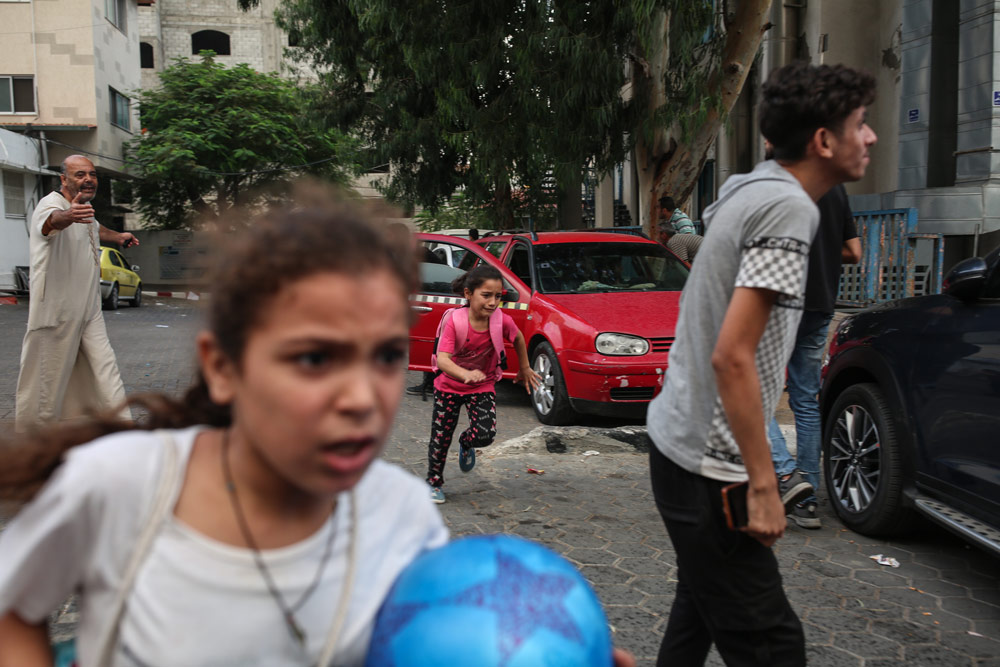
I came across the work of freelance Palestinian photojournalist Samar Abu Elouf after she recently won an RPS award, and her images of the current war in Gaza can never be ‘unseen.’ It’s hard to choose just a single picture from her outstanding body of work this year, but this one really captures the awful impact of the conflict on a civilian population. All that these little girls want to do is play football, not dodge rockets and artillery falling from the sky. Whatever your thoughts about the reasons for the current conflict and how it is being waged, it’s hard to come up with any justification for bombing young kids and trashing their homes.
There is also a strong personal element to Samar’s work, as she was forced to evacuate her home in Gaza City after it was partially destroyed. And rather than being a relatively pampered staffer from a news agency or national network, she had to use a cooking pot with ‘TV’ painted on the front as
a protective helmet.
‘The camera has made me a strong woman, and I will continue working and taking photos until my last breath,’ she said. Samar Abu Elouf is bravery personified and you can see more of her work at bit.ly/rpssamar
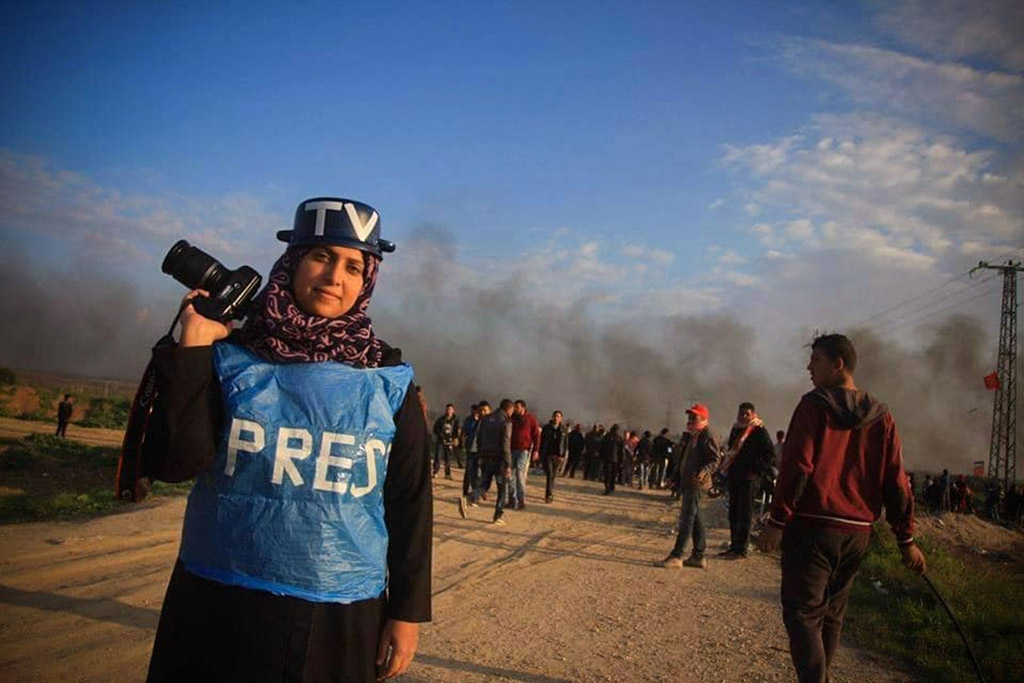
Joshua Waller, Online Editor
Untitled by Rob Blanken
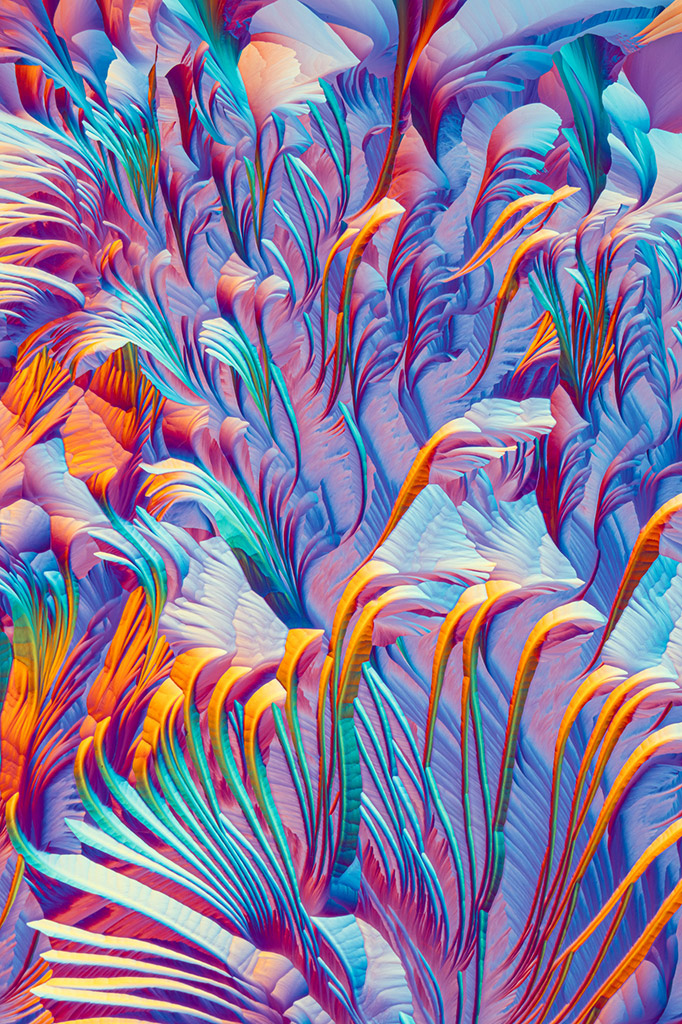
This image stands out as something that you might see if you’re looking through a series of AI-generated images – however, the interesting part of this image is that it’s a macro photograph of crystals of amino acids B-alanine, L-glutamine and glycine, which gives these amazing colours and textures. The image is both dramatic and colourful, whilst also being full of intricate details. It’s an image that stops me in my tracks as I spend time studying the detail and getting lost within the photo.
AP Contributors Choice: Best Photographs of the Year 2024
Damien Demolder
Trump by Evan Vucci

We often talk about the power of photography as though it’s some divine force for good and truth that has the capacity to liberate the people of the world. It can be, of course, but that’s just one side of the matter. Photography can be used to reveal facts and to raise issues just as much as it can be used to convince us of things that aren’t true – or at least, aren’t quite as they seem.
What I think of Donald Trump is irrelevant to my appreciation of this astonishing picture taken by Associated Press chief photographer Evan Vucci. Visually full, it presents a definite narrative in an extremely convincing way. It’s like a country song about heroism, patriotism, survival, injustice, triumph, inner power and resurrection. It might remind us (bizarrely) of the Black Power movement, raising the flag on Iwo Jima/the Reichstag – or one of a hundred movie scenes where our hero narrowly escapes an untimely death only to rise again with heightened potency.
Photographically the composition is fantastic, and the colours are so bright, bold and eye-catching that any picture editor would consider it a gift. I love looking at it, admiring the moment and the way Evan captured it. I can also really appreciate the visual qualities of Leni Riefenstahl’s films for the Nazi Party in the mid-to-late 1930s. I wonder how many Americans saw this picture and thought, ‘Yep, he’s the man for me’. It could be the shot that turned an election.
Paul Hill
Britain’s Prime Minister Rishi Sunak, soaked with rain by Henry Nicholls
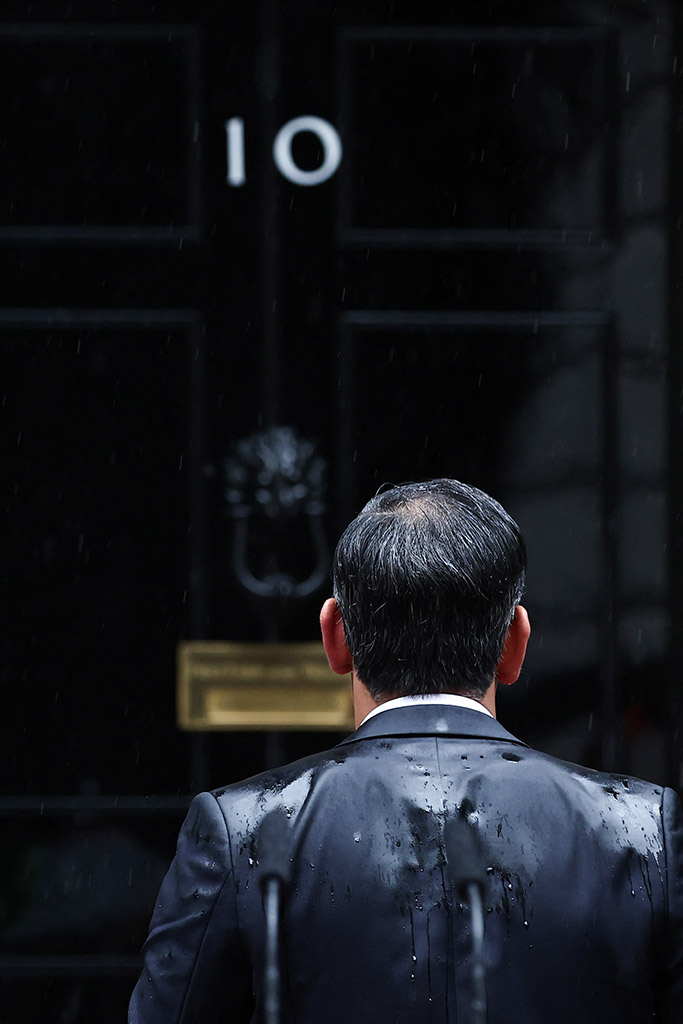
On 22 May my BBC app exclaimed: ‘PM is going to announce the date of the General Election.’ At the time I was enjoying my bacon bap and double espresso in an M&S cafe (AP contributors know how to live well!) accompanied by my laptop. So, I turned to BBC Live, and saw Rishi Sunak walk from Number 10 to the lectern, which for once hadn’t got STOP THE BOATS on it. I noticed a few wet spots on his expensive suit; then those spots joined together.
As he announced: ‘The date of the General Election will be the 4th of July’, it became obvious that a tropical monsoon was emptying itself on Downing Street. My first thought was: How can he keep going without an umbrella? And why did his office not suggest that this could be done indoors given the dire weather forecast? But all the time I was also thinking: This is the perfect metaphor for the Truss poison chalice period he was enduring.
My Labour Party friends thought that it was almost certainly a suitable metaphor for the previous 14 years, and my Tory friends just wanted the ground to open up and swallow them. I took out my phone camera, took a snap of the screen, and posted it on Facebook with the caption: WET WET WET. What I missed was to make a screen shot of this moment that elevated Henry Nicholls’ image into the historic and never-to-be-forgotten category. I used to hate being in the press pack outside Number 10 but this was one time I dearly wished I had been there…
Angela Nicholson
Blue Motion by Alison McCondichie

2024 has been a great year for SheClicks and ‘Challenge Accepted: A SheClicks Collection’, our exhibition and charity print sale (in aid of The Disabled Photographers’ Society) at the Fujifilm House of Photography in London was a wonderful highlight. The exhibition comprised images from the first seven months of our 2024 monthly photography challenges.
Each of those months, 25 images from the challenge were chosen by me to be displayed in the SheClicks online gallery (www.sheclicks.net/gallery). From those 175 photos, outdoor photographer Emily Endean and wedding photographer Emily Renier selected 35 images for the exhibition. The end result was a fabulous exhibition, beautifully printed and framed by Rivera and Coast.
From those images, the guest judges and I had to select a lead image, that would encapsulate SheClicks and the exhibition, and be used on all the promotional material. The decision was unanimous: ‘Blue Motion’ by Alison McCondichie, a beautifully creative and thoughtful self portrait. Until she visited our exhibition, I’d never met Alison and I wouldn’t normally consider having a portrait of a stranger on my wall, but I knew instantly that her image would feature in my print order list. Alison took her image on her Olympus OM1 Mark II using an exposure of just over 3 seconds to allow herself time to move while the shutter was open. The result is a subtle layering effect that creates an ethereal quality, as if capturing multiple dimensions of the subject in a single frame.
Tracy Marshall-Grant
Within Sight 4 by Helen Sear
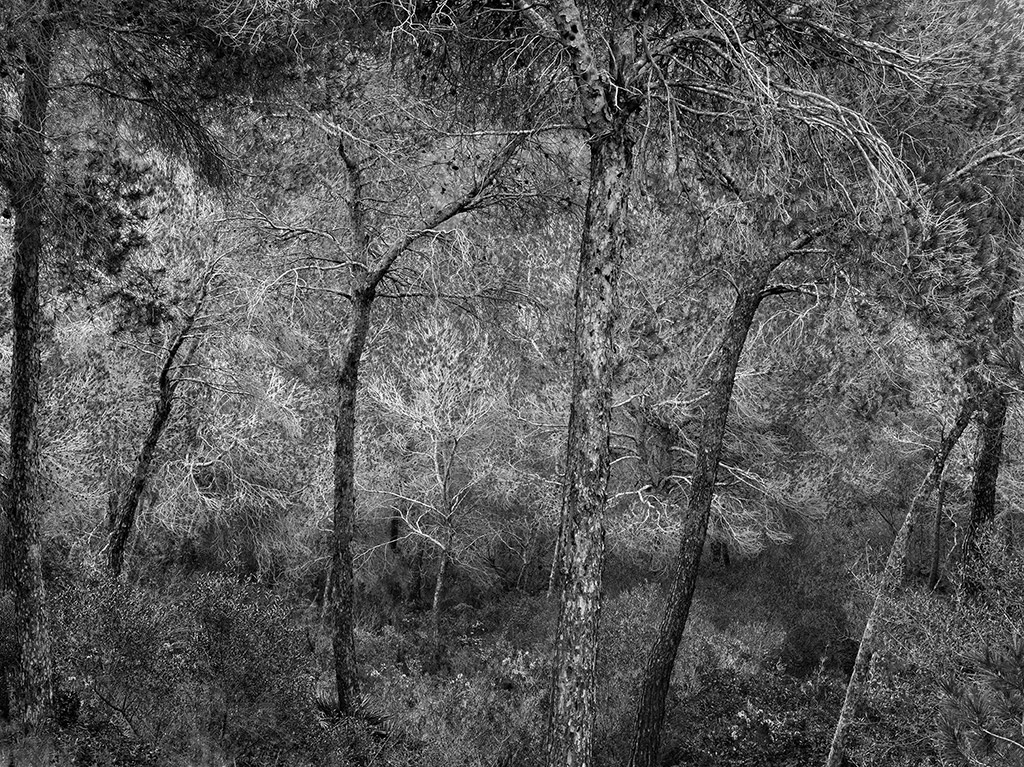
I have selected the image ‘Within Sight 4’ from the exhibition Within Sight. The exhibition has a double charge of positivity for me. Firstly this is a large exhibition of one of my favourite artists, Helen Sear, the mixed media artist who specialises in photography. Secondly the work was shown in the stunning Italian town of Reggio Emelia in one of the best European photography festivals – Fotografia Europea.
The exhibition showed in one of the oldest buildings of the town Saint Pietro and Prospero Cloisters where you weave and wind your way through medieval columns, cavernous rooms of aging beauty and fading frescos. The Within Sight exhibition brought together interrelated works by Sear that suggest alternative points of view which demonstrated different ways to look at the natural world. Implicit within its title is the idea that photographic images are not merely a facsimile of reality but rather, expressive interpretations of it.
The varying forms, shapes and design of the images of the land depart from the fixed perspective long associated with photography and as a result the exhibition takes you on a journey to explore situations in nature through the metaphor, of trees. Engaging the landscape and surroundings in this way, the exhibition and this image in particular invites viewers to reflect on their own proximity and entanglement with the environment.
Tracy Calder
Strength in Numbers by Theo Bosboom
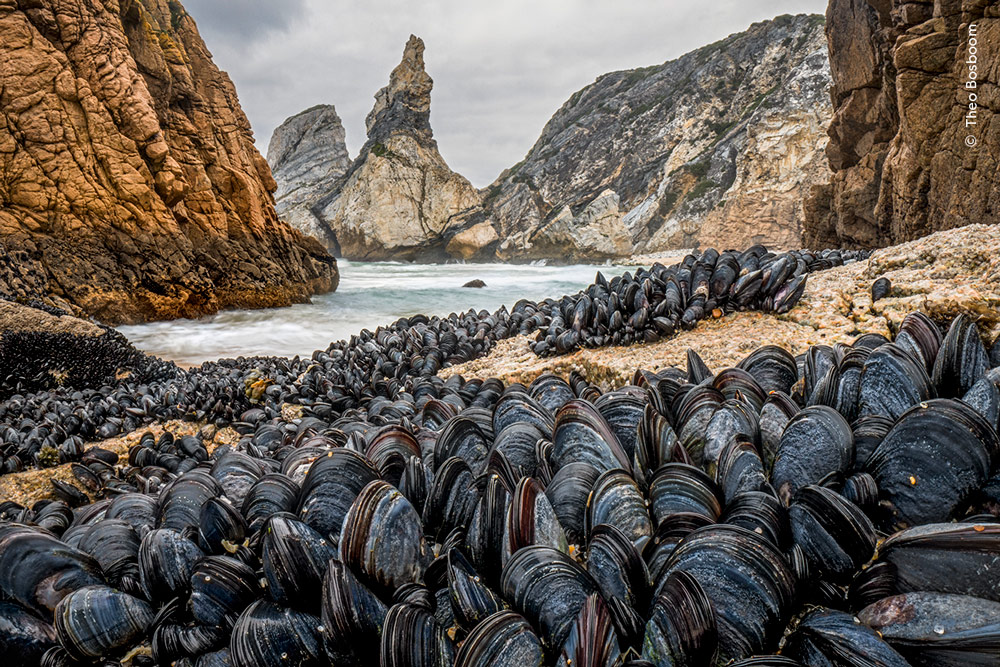
Celebrating species that are often overlooked or under-appreciated, Theo Bosboom creates images that illustrate both his mastery as a photographer and his determination to preserve and protect the natural world. ‘Strength in Numbers’ shows mussels bound together to avoid being washed away by the tide. The picture was Highly Commended in the Animals in their Environment category of Wildlife Photographer of the Year 60.
One of the things that makes the picture so striking is the wideangle effect created by a Laowa 24mm Periprobe lens. This lens can focus as close as 20mm with 2x magnification and, as such, it’s very popular with wildlife and macro photographers. Theo has achieved extensive depth of field by combining a stack of nine images and using an aperture of f/32.
What might have been a chaotic scene has been beautifully simplified thanks to Theo’s understanding of lead-in lines and the way they guide a viewer’s eye through the frame. Starting at the bottom with the mussels that are most in focus we move left, then right and then finally up the triangular rock in the distance. The balance is perfect. The exposure and combination of cool and warm colours also make this picture a winner in my eyes.
Wildlife Photographer of the Year is on show at the Natural History Museum in London until 29 June 2025. To find out more, visit www.nhm.ac.uk/wpy.
Picture Editors Choice: Best Photographs of the Year 2024
Mikko Takkunen, Photo Editor, International, The New York Times

The civil war in Sudan which broke in April 2023 has largely been forgotten by the international community. The New York Times was trying to gain access to the country since the start of the war and our chief Africa correspondent Declan Walsh and freelance photographer Ivor Prickett finally gained access a year later. They spent 3 weeks in the country in April of this year. They were some of the first Western journalists to make such a visit. We published a front page story of their visit in the beginning of June which was led online by this image of a lightly-geared soldier on a humble motorbike glancing at the heavily destroyed streets of the historic, sprawling Al-Shaabi market in Omdurman, Sudan, which is a city across the river Nile from the capital Khartoum.
The photograph is not a loud war photograph, but it is somehow haunting as it shows its aftermath and the way the lone soldier is looking at it all, feels somehow symbolic of how attention deprived the conflict has been. Ivor Prickett has covered several wars for the paper, but this image feels, unlike the frontline photographs he took for us in Mosul during the fight against the Islamic State or the otherwise more immediate pictures he has taken of the war in Ukraine. The Omdurman scene – which has some echoes of A Wanderer above the Sea of Fog by Caspar David Friedrich – is far more subtle than many war images, but that very fact seems to move one to spend more time with it and contemplate. Like all great photographs, it poses more questions than answers.
Sean Conway, Senior Picture Desk Editor at Getty Images
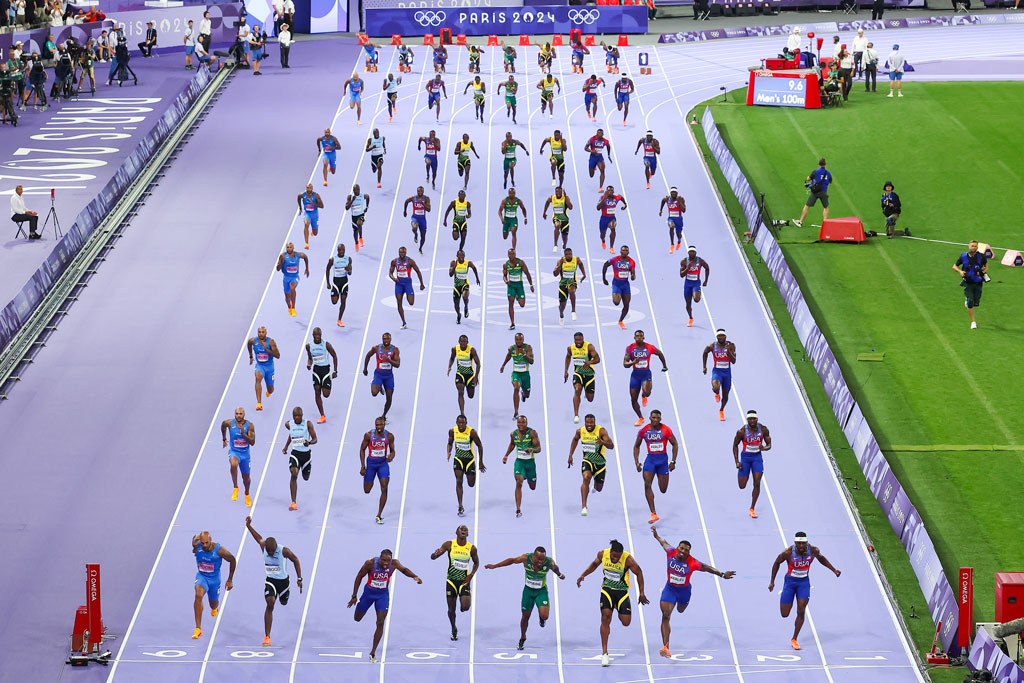
The men’s 100m sprint final is one of the biggest showpieces of the Summer Olympic Games, with thousands of images captured in such a short amount of time. The best images are those that distinguish itself from the others. This breathtaking composite image from Hector Vivas from the 100m final in Paris is from a photo series by Getty Images photographers called Layers of the Games – a collection of digital composites that show in one image the multiple layers of each moment during an event.
Krishna Sheth, Photography Editor, 1843 magazine, The Economist

The image is from a story I commissioned for 1843 The Economist. The feature is about the Khalistan Movement which calls for a sovereign Sikh state, which the Indian government considers a threat to national security.
Over the years India has cracked down on Sikh dissidents, even across borders. I commissioned photographer Amber Bracken to document the Sikh community in Surrey in British Columbia. in particular about Moninder Singh, a pro-Khalistani Sikh activist and his painful memory of the murder of his close friend Hardeep Singh Nijjar. The story documents the local Sikh community and their fear since the assassination of their leader Hardeep.
The photograph depicts a Sikh woman at the local gurdwara Sahib Dasmesh Darbar Surrey, British Columbia. The overall mood of the image appears to be one of sadness and introspection. The woman’s bowed head and somber expression, combined with the white clothing and the politically charged tattoo, create a powerful visual representation of the emotional impact of the Khalistan movement and recent events affecting the Sikh community in Surrey, British Columbia.
This image seems to effectively capture the personal and emotional dimensions of political movements and tragic events like the murder of Hardeep Singh Nijjar. It humanizes the broader political issues by showing how they affect individuals on a deeply personal level.
Jamie Honeywood, Senior Picture Editor, Channel 4
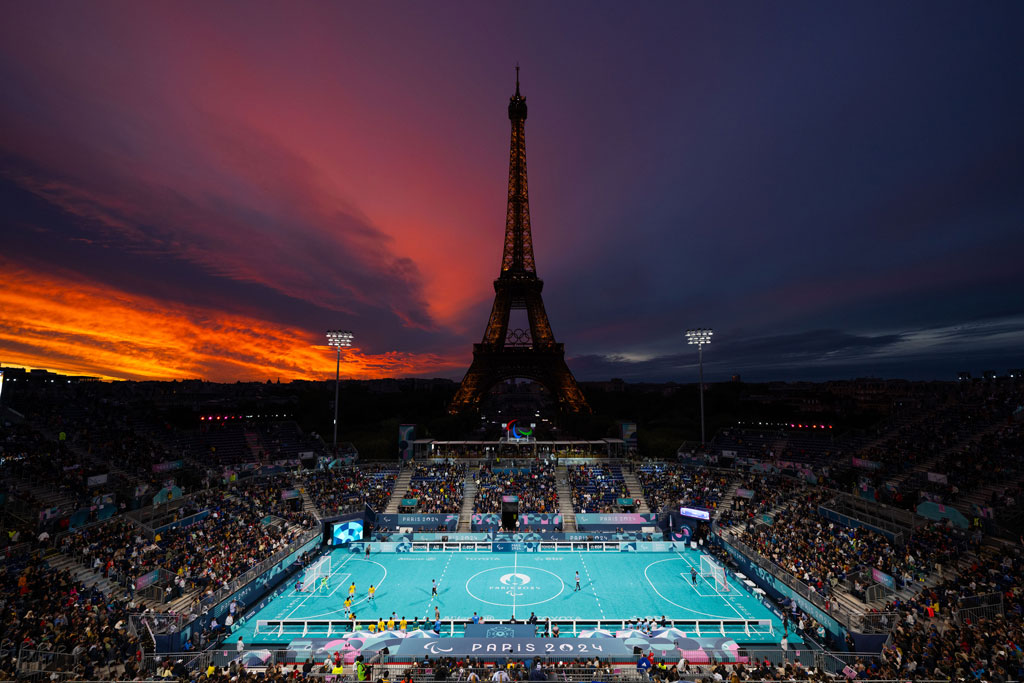
Working at Channel 4, when it comes around, the Paralympics means absolutely everything, and it requires every department to be working across the coverage of the games. This includes the Pictures team as well, this year the games were hosted in Paris and as a team, we kept Channel 4 streaming up to date and looking fresh with our daily image selection of the action from the games.
In a world where horrific news surrounds us daily, the Paralympics brings so much positivity, joy and highlights exceptional athletes on the worlds stage. We were blessed with the quality of images coming through, but this image stood out massively for me. It’s very cinematic and gives a great perspective of how the venues were incorporated into the geography of Paris. The strong contrasting colours and tones allow for the image to still stand out even when used in a smaller cropped frame, but the framing and composition of the image means it can also be used in a larger hero spot if needed.
It’s very ‘Paris’ and seems like the closest shot you could get to summarise this year’s games in one image.
Jim Powell, Picture editor, The Observer, Guardian News & Media

We received many outstanding and harrowing photographs this year from around the world, predominantly from Gaza, taken by courageous photojournalists in the field. There was also AP photographer Evan Vucci’s election-defining and perfectly composed image of Donald Trump after his assassination attempt, fist in the air. However, I have chosen this image by Finbarr O’Reilly, a member of VII Photo, as my image of the year.
The photograph was taken in August when O’Reilly spent two weeks in eastern Chad documenting Sudanese refugees who had fled Sudan’s western Darfur region after the recent surge in ethnic cleansing and sexual violence. The ongoing crisis there has generated minimal coverage in the press and a lack of international political will to curtail the fighting, despite the fact that the it has produced the world’s largest refugee crisis with more than 13 million people fleeing their homes – and despite the presence and perseverance of skilled photojournalists like Finbarr O’Reilly.
Jay Davies, Director of Photography, News EMEA (Europe, Middle East and Africa) at Getty Images
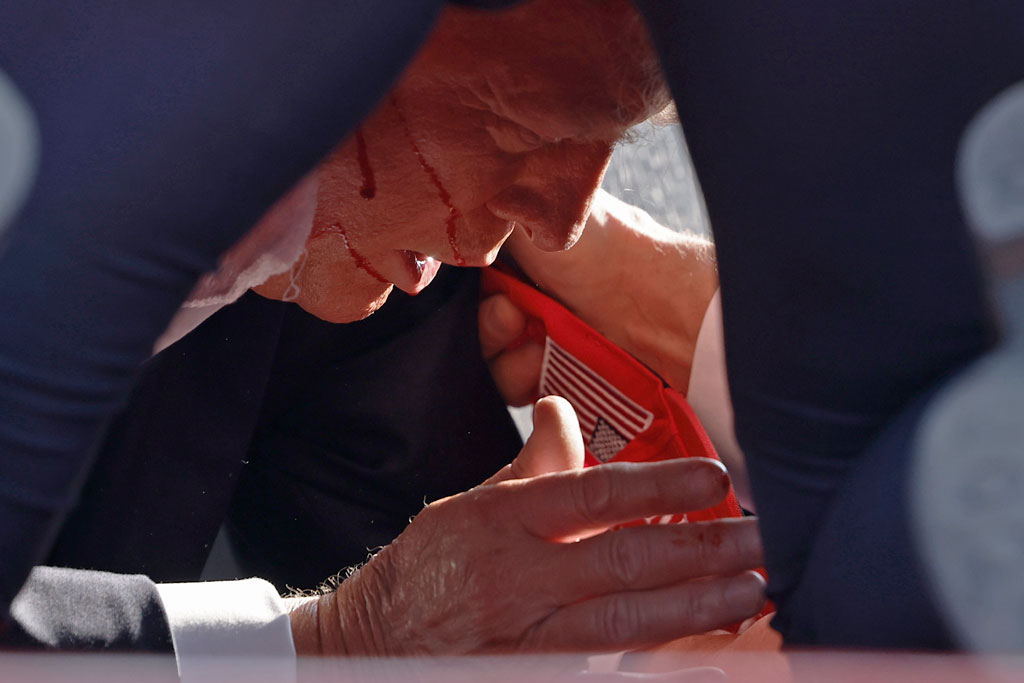
Campaign photography, even at its most candid and surprising, involves some degree performance and stagecraft. Donald Trump’s July 13 rally in Butler, PA, started like any other major campaign event, bathed in stars-and-stripes bunting and set beneath a gigantic American flag suspended between two cranes. For the handful of photographers around the stage, and a larger group on a riser amid the crowd, the challenge was to take this highly choreographed and contrived environment and find the revealing and unexpected moments. Then a burst a gunfire provided the unexpected in the most violent way. Secret service swarmed Trump and brought him to the stage, but not before a bullet grazed his ear, drawing blood.
Getty Images photographer Anna Moneymaker was one of four photographers in the buffer zone around the lectern that day, acutely aware that history was unfolding before them. Trump, too, seemed to hear the etching of the historical record and the moment’s iconic potential. Bloodied and standing before the mammoth flag, his instinct was to turn to the crowd, pump his fist, and shout “Fight! Fight! Fight!” That scene, both for Trump’s supporters and detractors, may be the most remembered and arguably the most iconic image of the day. But, like much political image-making, it was that of a performance. The most candid image, I would argue, is this picture by Anna, of Trump on the ground, shielded by secret service, and still in shock. Like the best political photography, it was the picture that most cut through the stagecraft and showmanship, to find a powerful person at his most powerless.
Louis Siroy, Deputy Picture Editor, Saturday Guardian News & Media

I tend to look quickly past images that seem to demand attention and seek an immediate reaction. I’m more inclined to spend time with and return to imagery that slowly draws me in.
This image by Christian Sinibaldi is a great example of monochrome in colour, or near enough, anyway. Taken at at 8.50 am on a Saturday in February one can see the advantages with smooth, even morning light, devoid of harsh shadows. Even the triangle of sky seems to be a continuation of the buildings muted colours.
Chosen from Sinibaldi’s series Passion for Cheers, where the photographer travelled the globe capturing cheerleaders — attention grabbing and serene portraits — including one in this year’s Taylor Wessing Photo Portrait Prize, this image initially drew me in for its oblique lines. Instead of taking the obvious route of photographing the group in front of the row of buildings with straight horizontal lines, Sinibaldi seemed to challenge himself by shooting diagonally down the street creating a much more dynamic shot.
And what we get are a number of interesting elements such as the black bollards on the left that help to frame the shot (with the black door on right) that happen to be the same height of the guys’ legs; the girls feet are just about level with the first floor; and interestingly the group entering stage left whose attire is the opposite of the of cheerleaders costumes yet also coordinated in their bundled up clothing, helping to identify the winter season.
Finally, I’m left asking questions about a subject I know nothing about. Why are some of the supports for a female in pairs and others a single base? Are some of the guys more experienced, fitter, or did Sinibaldi, who no doubt by this time was becoming well versed in the sport, help to choreograph this shot?
Related reading:
Follow AP on Facebook, Twitter, Instagram, YouTube and TikTok.







